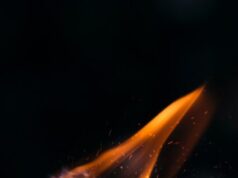Through randomly selected measurements, Austrian physicists can now determine the quantum entanglement of many-particle systems. With the newly developed method, quantum simulations can be extended to a larger number of quantum particles. In Science, physicists from Innsbruck, Austria, report on the first successful demonstration of this method.
Quantum phenomena are experimentally difficult to deal with. The effort increases dramatically with the size of the system. Scientists can control small quantum systems and investigate quantum properties. Such quantum simulations are considered promising early applications of quantum technologies that could solve problems where simulations on conventional computers fail. However, the quantum systems used as quantum simulators need further development. The entanglement of many particles is still a phenomenon that is difficult to understand. “In order to operate a quantum simulator consisting of 10 or more particles in the laboratory, we must characterize the states of the system as accurately as possible,” explains Christian Roos from the Institute of Quantum Optics and Quantum Information at the Austrian Academy of Sciences.
So far, quantum state tomography has been used for the characterization of quantum states with which the system can be completely described. This method, however, involves a very high measuring and computing effort and is not suitable for systems with more than a half-dozen particles. Two years ago, the researchers led by Christian Roos, together with colleagues from Germany and Great Britain, presented an efficient method for the characterization of complex quantum states. However, only weakly entangled states could be described with this method. This issue has now been circumvented by a new method presented last year by the theorists led by Peter Zoller, which can be used to characterize any entangled state. Together with experimental physicists Rainer Blatt and Christian Roos and their team, they have now demonstrated this method in the laboratory.
Quantum simulations on larger systems
“The new method is based on the repeated measurement of randomly selected transformations of individual particles. The statistical evaluation of the measurement results then provides information about the degree of entanglement of the system,” explains Andreas Elben from Peter Zoller’s team. The Austrian physicists demonstrated the process in a quantum simulator consisting of several ions arranged in a row in a vacuum chamber. Starting from a simple state, the researchers let the individual particles interact with the help of laser pulses and thus generate entanglement in the system.
Find your dream job in the space industry. Check our Space Job Board »
“We perform 500 local transformations on each ion and repeat the measurements a total of 150 times in order to then be able to use statistical methods to determine information about the entanglement state from the measurement results,” explains Ph.D. student Tiff Brydges from the Institute of Quantum Optics and Quantum Information.
In the work now published in Science, the Innsbruck physicists characterized the dynamic development of a system consisting of 10 ions as well as a subsystem consisting of ten ions of a 20-ion chain. “In the laboratory, this new method helps us a lot, because it enables us to understand our quantum simulator even better, and, for example, to assess the purity of the entanglement more precisely,” says Christian Roos, who assumes that the new method can be successfully applied to quantum systems with up to several dozen particles.
Provided by: University of Innsbruck
More information: Tiff Brydges et al. Probing Rényi entanglement entropy via randomized measurements. Science(2019). DOI: 10.1126/science.aau4963
Image: The repeated measurement of randomly selected transformations of individual particles reveals provides information about the degree of entanglement of a system.
Credit: IQOQI Innsbruck/M.R.Knabl











